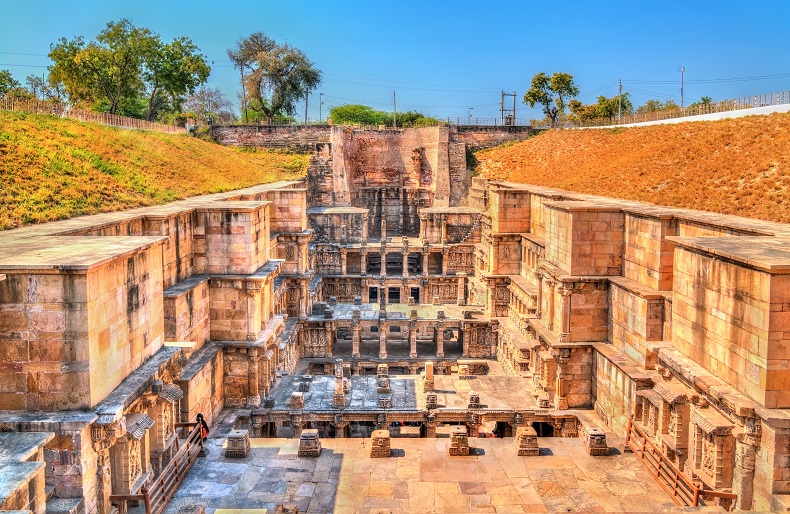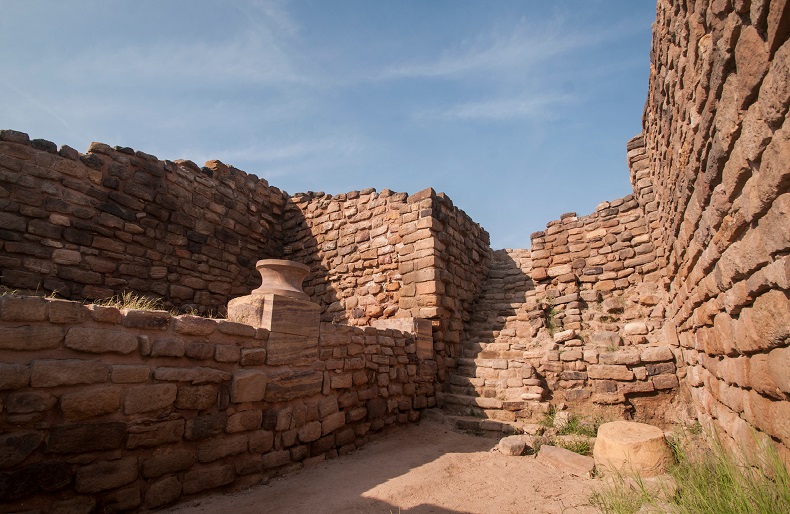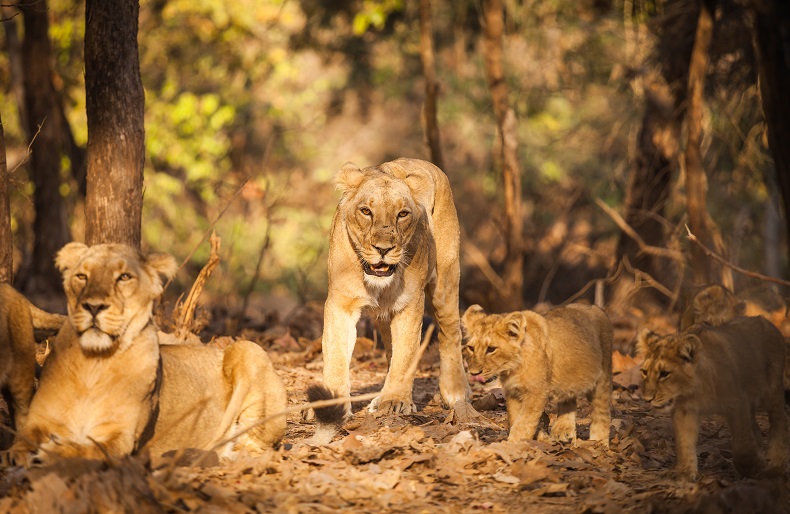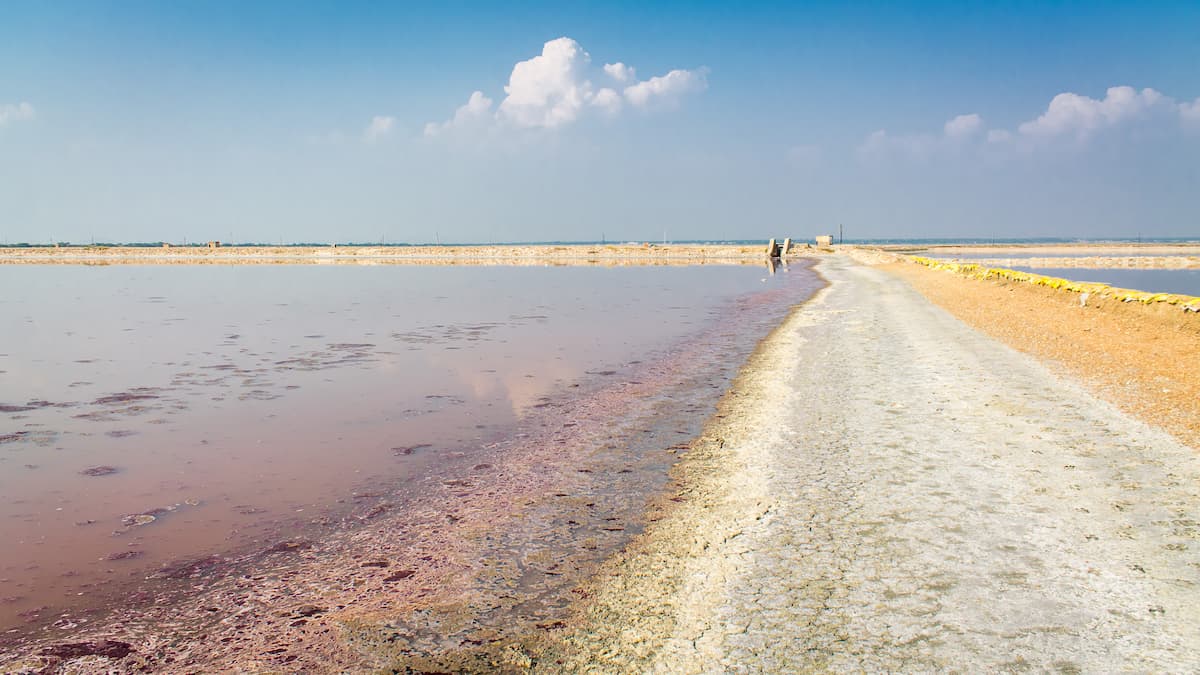An exciting road trip experience to Rajasthan
Cancellation of our flight to Ahmedabad Jaipur proved to be a blessing in disguise. After some hectic rescheduling, we decided to self-drive an Innova from Ahmedabad and I wasn’t very nervous because now I knew how to change tyres. Road trips let you feel the breeze, enjoy the region, try local foods and interact with the locals. The first day was one of the lengthiest of the excursions. We began from Ahmedabad after breakfast and headed to Modhera to see the sun temple there – one of the two sun temples in India – the other being in Konarak. A soothing drive through the green farmlands just 35 km away from Mehsana on the way to the temples of Goddess Bahucharaji is the village of Modhera. Set against the backdrop of River Pushpavati, surrounded by a terra-formed garden of flowering trees and chirping of the birds, lies the famed Sun temple of Modhera. At Modhera, the temple is smaller than the Konarak, however no less great as the perfection of the carvings is basically extraordinary. It is poetry written in stone. It is a vast layout with a kund reflecting the art of masonry of the Solanki Dynasty. It is an incredible place to visit. A walk around the peaceful temple complex exposes you to the positively strong aura of energy which the place radiates and through it brings one closer to Nature. It affixed a decent tone for the road trip and we headed to our next stop – Patan, the former capital of Gujarat. Of all the monuments at Patan, the Queen’s Stepwell or Rani Ki Vav is the most stunning and showcases the sculpting skills of the artisans of the Solanki era. Constructed by Queen Udayamati and built in the Khajuraho style, the Vav is 90 feet wide but there are no erotic images here. It is effectively an underground palace with a facility for water storage at the bottom. Friezes and carved pillars adorn the sides and even today, after seeing it, we could imagine the splendour of the kings of old. The walls are well decorated with images of Sheshshai Vishnu, Shiva, and various other gods and goddesses.
Also situated here is the Sahastralinga Talav of a thousand Shiva shrines spread over 5 km and built by the great Jayasimha Siddharaja (AD 1093-1143). Lore says that the tank does not hold water anymore due to the curse of Jasma Odan, a gypsy woman.
There are 100 temples of the Jains in Patan, among which the one dedicated to Panchasara Parasvanath is the largest. It has a famous white marble image of Vanaraja and close-by is the Hemchandracharya Jain Gyan Mandir that contains valuable Jain manuscripts, some of which were written in ink made of gold.
From Patan, we moved ahead to Gandhidham, primarily because this was relatively close to Dholavira. Though the drive is not a short one, the highways in Gujarat are in pretty good shape with little traffic. This drive was the highlight of the whole trip. When we drove through the great salt plains of the Rann of Kutch, the scenic beauty looked unreal. Dholavira is actually situated on an ‘island’ in the Kutch and is surrounded by the blinding white salt expanse of the Rann. As we drove through the gleaming salt flats it was as if we were transported to a different world. Having reached Dholavira, we came across a small but interesting museum there, which should not be missed as it displays some of the famous Indus valley seals and inscriptions including the ‘unicorn’ seal. Dholavira has these items which are around 4000 years old. It is actually pretty well preserved – with huge reservoirs lined with brick, passages to walk in and even a ‘citadel’ where probably people of significance lived, giving you goosebumps. There are no sculptures or artwork to admire here but the feel is mind-blowing. On our way back we walked the white carpet of salt and it had a strange crunchy feel, we will come here again sometime in the future to get a glimpse of the stunning whiteness on a full moon night.
The next day we planned to visit the two famous temple towns on the coast, Dwarka, and Somnath. We drove through Jamnagar past the Reliance refinery which is supposed to be the biggest in the world. Roads were good and we reached Dwarka in the early afternoon. We made our way through a crowded entrance. The Dwarkadhish temple is quite pretty with elegant spires carved intricately all over. With a seafront of the lashing waves, and a beautified stretch of elegant stone structures, with Krishna’s beloved cows having a free run everywhere in Dwarka and this place is also no exception – it is still a serene place to sit and soak in the sunset. The next day we went to Bet Dwarka, a short drive from Dwarka, a small island near Okha. There are regular boats ferrying to the island, mostly overloaded, nevertheless a nice journey on the sea, feeding the seagulls on the way back catching the nuts in the air with great skill. An unexpected bonus was the flamingos in a lake, which we passed by, during the drive!
With the backdrop of the rich history of the principal temple of Somnath, it is believed to have been built in gold by the Moon God Soma, in silver by the Sun God Ravi, lastly in wood by Krishna and in stone by the Solanki Rajputs in the 11th century. The existing temple which was built in 1951, is the seventh reconstruction. Its riches attracted several invasions, but with every invasion, it was restored to its original magnificence by the faithful Hindu followers. With its breath-taking view from the tip of the Saurashtra peninsula, caressed by the waves of the Arabian seacoast, the temple has been built in the Chalukyan style with a Shikhara almost 50 m in height. The temple’s imposing architecture includes intricate carvings, silver doors, an impressive Nandi idol, and the central Shiva Linga. In the vast courtyard stands the massive mandapa, as well as the main shrine, where the gently curved pyramidal forms tower over the whole complex. There is a tower titled ‘Deep Stambha’ erected on the embankment. On the top is a figure shaped like a conch shell as if lying on its side and in the tower, there is an arrow pointing directly to the South Pole.
Our next few destinations were the Rajasthani palaces. The Wankaner Palace is a beautiful historical Indian palace built by the Maharaja of Wankaner H.H. Amarsinhji in the 20th century. The palace has lots of historical items like decorative doors, windows, antique chairs, mirrors, and other such antique items, and was the holiday-spot for the Maharaja. Now Royal Oasis Wankaner is one of the finest heritage hotels of India.
The Lakshmi Vilas Palace is an extravagant sample of the Indo-Saracenic architecture and was built by Maharaja Sayajirao Gaekwad III in 1890. At the time of construction, it boasted of the most modern amenities such as elevators and the interior is reminiscent of a large European country house, where the Royal family resides today.
The next day we proceeded to the Saputara, a hill station in Gujarat where you will both lose and find yourself. The view en route to the hills is spectacular. The Dang forest spread within the Sahyadri Range shelters several tribes of people and wildlife.
One should not miss a visit to Diu, which is the best combination of sun, sand, and sea! We found Diu very pacifying! Daman is a confluence of various cultures as it has been influenced by European, Indian and Portuguese cultures. It is known for its soothing climate and gives a feel of celebration.
Under no condition could we have missed the Gir National Park, reputed for its Asiatic lions. Asiatic lions are found only in this enclave in the whole world. Gir has one of the largest forests in the western part of India and has roughly 300 water points for wild animals. With a variety of animals and more than 290 species of birds, safaris are frequently arranged.
Not to forget Mandvi, this was originally a small fortified town. It has a fort wall of about 8 m high and 1.2 m wide stone masonry. This city has a 400-year-old shipbuilding industry, a lot of footfalls happen to see the windmills, and one should surely experience the camel ride at the beach.
The Sabarmati Ashram, formerly known as the ‘Satyagraha Ashram”, was originally situated at the Kocharab Bungalow of Jivanlal Desai, a barrister of Gujarat. Subsequently, it was shifted to the banks of Sabarmati River and then it came to be known as the ‘Sabarmati Ashram’.’Hridaya (Heart) Kunj’ is the cottage where Gandhiji lived. The Ashram has the Gandhi Sangrahalaya, a reservoir of National importance.
We made it a point to visit the Swaminarayan Akshardham at Gandhinagar which is a Hindu house of worship, a dwelling place for God, and a spiritual and cultural campus dedicated to devotion, education, and unification. Timeless devotional messages and vibrant Hindu traditions echo in its art and architecture. The Mandir is dedicated to Bhagwan Swaminarayan (1781- 1830) and the avatars, devas, and sages of Hinduism. The mandir, the exhibitions and even the gardens of the Akshardham, echoes with spirituality. The Akshardham mandir has over two hundred murtis (idols), representing spiritual stalwarts from over many generations.
65 km from Ahmedabad is the Nal Sarovar Bird Sanctuary. It’s a real treat for birdwatchers as it spans 120 square km of a lake and marshlands. Being the largest wetland bird sanctuary in Gujarat, it attracts over 210 species of indigenous and migratory birds. Some rare species are the rosy pelicans, white storks, flamingos, and herons that come to nest at the sanctuary. A boat ride is an interesting way to see this sanctuary.
We decided to now step into Rajasthan through Mount Abu and see the Dilwara temple in Rajasthan. The moment you step into Rajasthan the riot of colours hits you; the turquoise blue, the emerald green and the tomato red just spellbind you. As you approach the temple, you would almost be disappointed till you step inside this marble marvel. Located amidst the lush green Aravalli hills, the Dilwara Temple stands as a marvellous pilgrimage site for the Jains. Built by Vastupal Tejpal between the 11th and 13th century, there is an opulent use of marble and intricate carvings all over with stunning designs and patterns carved on roofs, walls, archways, and pillars. The Dilwara Temple includes five equally splendid temples namely- Vimal Vasahi, Luna Vasahi, Pittalhar, Parshavanatha and Mahavir Swami Temple dedicated to Lord Adinath, Lord Rishabhdeo, Lord Neminath, Lord Mahavir Swami and Lord Parshvanath, respectively. Each of these shrines has Rang Mandap, a central hall, Garbhagraha, the innermost sanctum where the Lord resides and Navchowki, a group of nine heavily decorated ceilings. Some other stupendous structures include Kirthi Stumbh and Hathishala. With its sheer simplicity and austerity, the temple tells you about Jain values and principles.
To get some respite from the scalding heat of Rajasthan which is around 66% desert, the spiralling roads to its only hill station, Mount Abu, caught our fancy. This oasis has a peculiar beauty and is home to some rivers, lakes, waterfalls, etc. The full impact of how a sunrise and sunset can leave one unnerved is comprehended here. All the postcard imageries take the shape of reality right here.
We started on our tour to Jodhpur about 270 km from Mt Abu. The road was quite good and several good motels were on the way to lodge or stop by for a meal. Jodhpur because of its bright sunny weather, is called the ‘Sun City’, was founded by Rao Jodha, a Rathor clan Chief. It is erstwhile Marwar. Divided into Old City and New City , separated by a 10 km long wall is mesmerising in its beauty, has many beautiful palaces and forts such as Mehrangarh Fort, Jaswant Thada, Umaid Bhavan Palace, and Rani ka Bag Palace. The Umed garden is another charm of Jodhpur.
We decided to head towards Jaisalmer, very close to the Pakistan Border. It’s popularly known as the ‘golden city’ due to its bounteous golden dunes in the Thar Desert. Jaisalmer is decorated with lakes, ornate Jain temples, havelis and castles built in golden yellow coloured sandstone. You can enjoy a camel ride through this desert or camp under the night sky in this golden land for an unforgettable experience. You should not miss the Jaisalmer Fort which stands as a crown atop the city and is a contrast to the scenic landscape. The narrow alleys surrounding the fort are inhabited by people residing there for eons.
Have you heard of a quaint little town called Ranakpur, a pilgrimage town for the Jains and very popular tourist spot? This beautiful valley is renowned for some amazingly carved Jain temples constructed in amber stone around 1439 AD and is named after Rana Kumbha, the ruler of Mewar who donated his land for the building this temple. In his attempt to fulfill his dream of a celestial vehicle, a Jain businessman Dharna Shah, started its construction under the patronage of Rana Kumbha. Vegetarian Jain food is available at very affordable rates inside the temple grounds; you also have other good options outside. Other famous temples are the Surya Narayan temple and the Chamukha temple dedicated to Adinathji, their First Tirthankara.
We realised why Udaipur is known as the Venice of the East, with its sparkling blue lakes against the backdrop of the Aravali hills. The famous Lake Palace, in the middle of Lake Pichola, is one of the most beautiful sights of Udaipur. It is also home to the Jaisamand Lake, claimed to be the second largest man-made sweet water lake in Asia. The beautiful City Palace and Sajjangarh (Monsoon Palace) enhance the architectural grandeur of the city. The city is also known for its profuse availability of zinc and marble. Solar observatory in Lake Fateh Sagar is the only observatory in India located on an island and is a replica of the Big Bear Lake in Southern California. Lord Vishnu’s temple, the Jagdish Temple, continues to be one of the most famous temples in and around Udaipur. This three storied architectural feat has carved pillars, graceful ceilings, and brightly painted walls. There were many other tourist attractions in Udaipur but we were running against time. We left these hot spots for our next trip, to revisit Rajasthan sometime in the months ahead, and feel the romance all over again!







